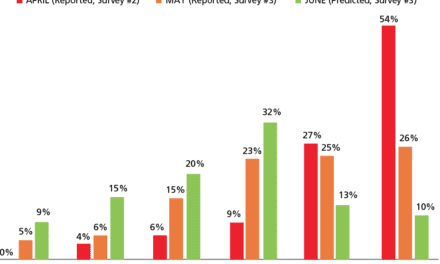Bethesda, Md – Good news, America. You’re hearing better than you did 40 years ago—or at least that’s what researchers have found after comparing the results of two hearing surveys conducted roughly 40 years apart. The findings are published in the December 2010 issue of Ear and Hearing.
The new findings come from researchers from the National Institute on Deafness and Other Communication Disorders (NIDCD), the National Institute for Occupational Safety and Health (NIOSH), and the University of Texas Health Science Center at San Antonio.
Data gathered from the National Health Examination Survey I (NHES I) in 1959-1962 was compared with data from the National Health and Nutrition Examination Survey (NHANES) in 1999-2004. Although the testing equipment and methods have changed somewhat over the years, the goal was essentially the same: to find the softest sound levels at which randomly selected subjects between the ages of 25 and 64 could hear a range of frequencies, from 500 to 6000 hertz (Hz) for the earlier survey and from 500 to 8000 Hz for the later one.
The scientists discovered that men and women today across the age spectrum have better hearing than their decades-older counterparts primarily in the upper frequencies (2,000, 3000, 4000, and 6000 Hz), while being roughly the same for the middle frequency of 1000 Hz. Hearing loss in the upper frequencies makes it especially difficult to discern speech sounds when there’s lots of background noise.
Although the cause for improvement is not clear, the researchers suggest a variety of health factors may have played a role, including a drop in the number of people who smoke, better health care for diabetics and people with cardiovascular disease, and better care for childhood ear infections, all of which are linked to hearing loss.
Another factor may be due to modern vaccines. MMR for measles, mumps, and rubella, and the vaccine against Haemophilus influenzae type B (HiB), which helps protect children from meningitis, were developed in the intervening years.
Two additional factors may have been the reduction in manufacturing jobs over the years, now fewer than half the number they once were, as well as the increase in hearing conservation programs in noisy workplaces, thanks to the Occupational Safety and Health Act of 1970 and the Hearing Conservation Amendment of 1983.
Co-author of the study, Robert Dobie, MD, University of Texas Health Science Center at San Antonio, said in the press release, “The bottom line is that the people with really noisy jobs have to be using hearing protection and getting annual hearing tests, so I think there’s been a very definite change.”
As part of the study results, the researchers have produced a new percentile distribution table showing hearing ability by age and sex in Americans based on the more recent NHANES data. The researchers propose that this table replace the current table used for international and national standards, which is based on the older NHES I data. The national and international standards are frequently used in research, occupational medicine, and law as a way to compare how a particular activity or product might affect hearing in a population or to determine how hearing in a specific group of individuals, such as fire fighters or construction workers, stacks up against today’s norm.
“Obviously, if you’re going to look at a bunch of people of different ages today to see whether this group of people hears worse than it should, then it would be good to have up-to-date data. So that was part of the reason for doing this study,” said Dobie.
Among the next steps, the authors plan to investigate how children’s hearing may have changed over the past half century using parallel national surveys of children for comparison. Given the improvements that have been made in vaccines and ear infection care, they hypothesize that the results will likely be very similar to those of the adults.
SOURCE: National Institute on Deafness and Other Communication Disorders (NIDCD)




